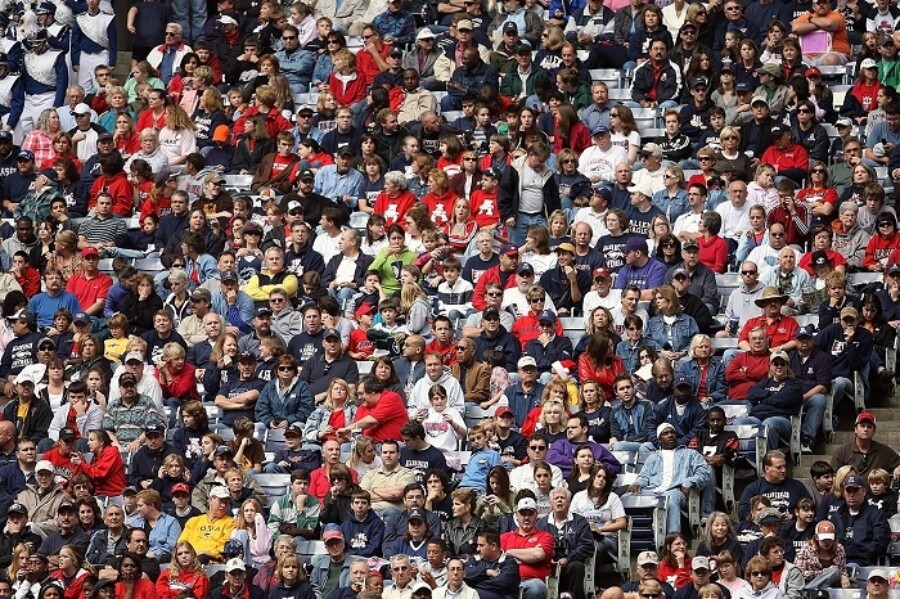
Delivering a standout customer experience is even more critical when your fans can just as easily interact with you away from your venue as within it. The San Jose Sharks know this all too well, which is why the team is re-imagining what they want the customer experience to look like for the crowds who attend their games. And the team’s President, Jonathan Becher, is bringing in technology to play a vital role in helping personalize these experiences for fans.
The Changing Formula for Fan Happiness
“The formula for happiness used to be if the home team won, the fans left happy. It was that simple,” said Becher. “Now they want to be entertained. They demand better food, and a higher variety of food. It’s become a culinary experience. They want music within the games, as well. And so, just like software companies are learning, sports are learning it’s not just the game, it’s about the experience around the game.”
The Sharks also recognize that hockey poses a unique challenge when it comes to getting its customers to spend at an event. “There are no breaks in my sport,” Becher described. “There’s no time for people to get food or beer. There are only two intermissions. So, I do 80 percent of my in-game sales in 20 minutes.” That’s a tiny window just to deliver the basics, let alone a memorable experience.
As Strong as the Weakest Link
Because it’s a customer experience issue, many sports and entertainment businesses have considered factors like length of lines and product inventory a front-office problem and have invested in customer-facing solutions. But Becher, who joined the Sharks after leaving his role as the Chief Digital Officer at SAP, sees how SAP technology can bridge the gap between front-office and back-office challenges. To put this into practice, however, involves a mental shift within the organization.
“I will tell you that I am a bit of a contrarian thinker,” Becher said. “That is, I am trying to change the functions inside my organization so there is not the concept of sales and marketing and e-commerce, etc. I find that leads to siloed thinking where people optimize for their particular function. And we’ll end up with a weak link.”
A Chatbot With Beer Intelligence
While the Sharks are going all-in on the customer experience, technology plays a key role in each fan’s encounter with the brand. Becher gave one example of how SAP’s “intelligent enterprise” could play out in the arena:
“I have wanted to, for some time, build a little chatbot inside of my app, where someone could say ‘How do I get a microbrew fast?’ I’m going to get out of my seat and it’s going to point me to the shortest line near me.”
“A truly intelligent enterprise would then recognize that, if I ask this question again, the app has already done the work before. It shouldn’t need to go through the same process. In fact, I’m probably going to want the same thing every time I come to a game, so the app should push an alert when I walk in the building the next time that says ‘Oh, by the way, you got a microbrew five minutes after the game started last time. If you go now, I’ll give you $1 off.’ Why would it do that? It’s trying to prevent lines, change my behavior, and encourage me to not wait until the break in the game to get a beer. That’s an intelligent enterprise.” Shorter lines plus incentives equal not only increases in sales, but happier customers.
Putting SAP Technology Into the Game
SAP Leonardo, through its focus on solving specific business challenges with help from emerging technologies, is a perfect solution for the Sharks to draw from. Becher’s prior experience with SAP means that he knows each product within the SAP suite has its own role to play. “We don’t really believe in big bang launches. So, I will not pretend that I am using every function [within each SAP product] for every one of these things,” explained Becher. “I’m using a little piece here and there. As we tackle problems, we can just pull together the right technology and go.”
On and Off the Ice
No doubt, Becher’s experience working for SAP has shaped his understanding of how customers interact with the Sharks, both inside and outside the arena. The Sharks realize that a true end-to-end experience starts when the customer leaves their house or office to travel to the arena, and it ends when they arrive safely wherever they want to go after the game. This type of thinking helps the Sharks identify how to best use technology to support every possible interaction with customers.
If you’re using SAP technology, you can apply this model, too. Ask yourself: How can the technology within your own customer experience help change behavior in the same way Becher is envisioning how chatbots increasing sales outside of peak times? These are the questions facing not just CIOs, but marketing managers, sales managers, and all types of roles. Solving problems as an entire company, and not within siloed functions, can help you keep your customer experience from being put on ice.
To hear more stories like this one from the San Jose Sharks, reserve your spot at the Customer Experience Innovation Forum, our newest event for retailers, consumer products and services companies, and wholesalers.